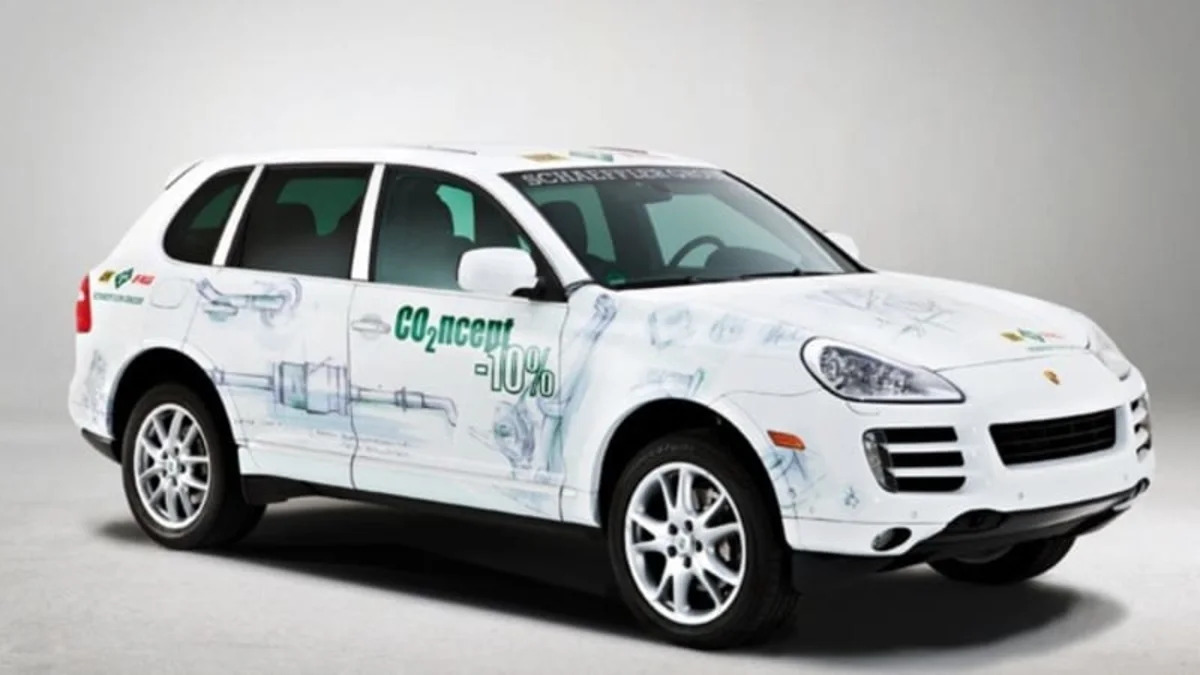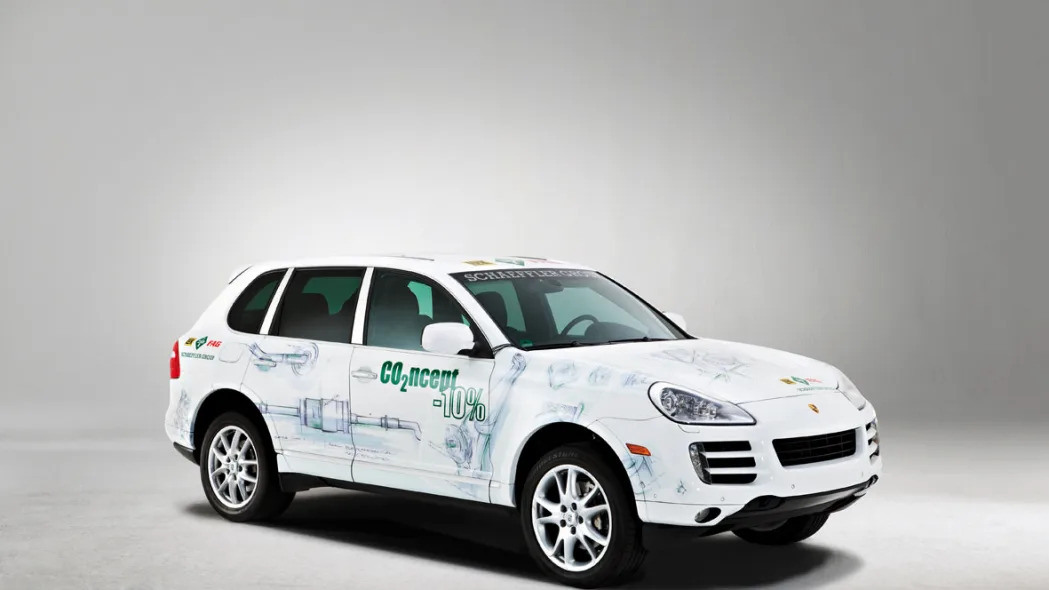German supplier, the Schaeffler Group has announced a new concept based on the Porsche Cayenne, meant to demonstrate the possibilities for CO2 reduction through friction reduction. As a bearing maker, friction is at the heart of Schaeffler's business. Schaeffler collaborated with Porsche on the CO2ncept-10% Cayenne supplying new bearings for the differentials as well as different engine components. The tapered roller bearings in the differentials were replaced with angular contact ball bearings.
As has already been demonstrated with systems like power steering, replacing hydraulics with electrical/electromechanical equivalents can also help reduce drag and parasitic losses. The production hydraulic cam-phasing hardware was swapped out for a new more efficient electromechanical system while additional friction reductions came from optimizing the tappets an belt and chain drive systems. Similarly, the former hydraulic roll stabilizer has been supplanted by an electrical version. The Cayenne will be shown at the ATZ/MTZ Congress in Esslingen, Germany this week.
[Source: Schaeffler Group]
press release
The Schaeffler Group will present the CO2ncept-10% vehicle at the ATZ/MTZ Congress focusing on "Friction Reduction in the Powertrain" to be held on December 9-10 in Esslingen. CO2ncept-10% is an advance development project that was carried out jointly by Porsche and the Schaeffler Group and involved the use of novel and optimized components to achieve an overall reduction of ten percent in fuel consumption and CO2 emissions.
CO2ncept-10% is a CO2 demo vehicle based on a Porsche Cayenne with a V8 engine. This vehicle is equipped with several new components as well as tried and tested and optimized parts, all part of the Schaeffler Group's powertrain and chassis product range. These components contribute greatly to significantly reducing fuel consumption compared to production vehicles. During this joint advance development project, the Schaeffler Group was responsible for designing and verifying the components while Porsche was in charge of system coordination and validation for the entire vehicle. Overall, this concept allows vehicle fuel consumption to be optimized by approximately ten percent, both theoretically (determined from complex simulation calculations) and experimentally (verified by Porsche in extensive bench testing). The calculation standard used was the standardized New European Driving Cycle (NEDC).
The engine accounts for 5.8% of the optimization of fuel consumption and the associated CO2 emissions. Most of this (4.1%) results from the modification of the VarioCam Plus valve control system through the replacement of hydraulic cam phasers by electromechanical cam phasers and the use of optimized switching tappets on the intake side. An additional 1.7 percent could be achieved due to the minimized frictional loss through the cross-system optimization of components in the valve train, belt drive and chain drive.
The double-row angular contact ball bearings installed in the front and rear axle differentials generated another 1.1 percent of fuel savings. These TwinTandem bearings replace the previously used tapered roller bearings and reduce frictional resistance considerably compared to the conventional production transmission. The reduction amounts to 35 percent in the front axle transmission and 42 percent in the rear axle transmission.
Fuel consumption can also be reduced in the chassis. Replacing the hydraulic roll stabilizer with an electromechanically controlled equivalent and using smooth-running wheel bearings brought about a consumption benefit of 3.2 percent. "As in the case of the cam phasers, the electrically operated components make such an important contribution because they require energy only when their operation is requested," explains Dr. Robert Plank, Manager of Corporate Engineering for the Schaeffler Group. "In hydraulically controlled systems, the pumps have to maintain pressure permanently, resulting in much higher energy requirements."
"This project is a good example of the successful cooperation between automobile manufacturers and suppliers. This cooperation reduces development times, avoids extensive redundancies and makes an important contribution to competitive ability," says Dr. Robert Plank. "To us, the CO2ncept-10% is impressive proof of a continuing optimization potential that is also closely related to volume production. This is not the end of the line though. CO2ncept-10% is the sum of its components, and these components are only a few from the Schaeffler Group's portfolio that allow similar levels of energy efficiency optimization to be reached for vehicles from other segments."



Sign in to post
Please sign in to leave a comment.
Continue